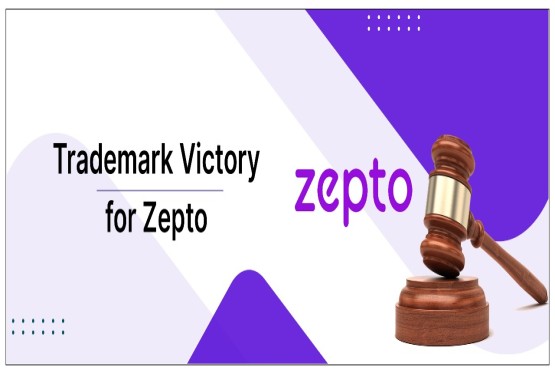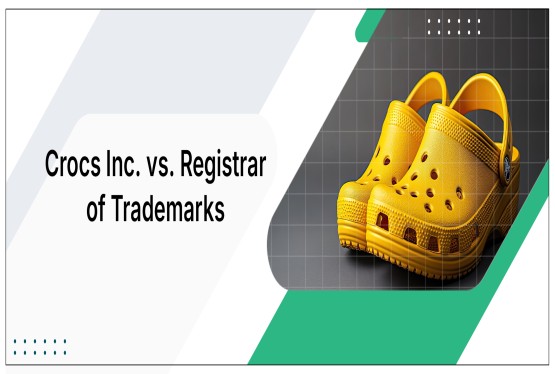Trademark are intellectual property rights that protects any logo, symbol, word, or combination of words, symbols, and numbers that give a business a distinct identity. Businesses increasingly look beyond their domestic markets for growth opportunities. As these businesses grow and expand globally, they often find that the trademark protection they sought in India does not automatically extend to other countries.
Trademarks are inherently territorial in nature. That means when a business registers a trademark in one country, it only provides protection against infringement within that jurisdiction, and allows the trademark owner to enforce their rights against unauthorized users operating within that country only. Hence, a trademark registered in India will not be given protection automatically in other countries. Each country has its own trademark system, and a mark must be registered in each jurisdiction where protection is sought. The trademark owner cannot rely on their domestic registration to enforce rights internationally.
Need for International Protection
When companies grow and expand globally, they realize that their trademark though registered in India does not automatically extend to other countries. Every nation has its own separate system for trademarks, governing laws, registration procedures, and enforcement mechanisms. That is why entities expanding or planning to expand their businesses on an international level, who want to protect their trademark in multiple countries must file separate trademark applications in each of those nations. But that would be time taking and not to mention expensive as well. However, some international systems like the Madrid Protocol offer a centralized registration system to simplify the process of obtaining multi-jurisdictional protection in one go.
What is Madrid System?
Madrid system, often referred to as Madrid Protocol, allows trademark owners to file a single international application. It is a convenient and cost-effective method for registering trademarks worldwide through a single application or Madrid application. This unified system stands in stark contrast to the traditional method of filing separate applications in each desired country, a process that can be both time-consuming and costly. Through Madrid application, protection can be sought in up to 130+ countries.
However, each designated country still retains the right to examine the application according to its national laws and decide whether to grant protection. This means that the trademark may be accepted in some countries and rejected in others, based on local laws and existing registrations.
How to Secure Worldwide Trademark Protection
There are two methods by which businesses can secure trademark protection worldwide:-
-
Through Madrid Application, or
-
A direct or an individual application in the State where trademark protection is sought.
Process for Trademark Registration Under Madrid Protocol:
-
Filing of Application: The applicant must prepare and submit their application for an international trademark registration through Indian Trademark Registry, which serves as the Office of Origin. This initial step requires the applicant to have a registered trademark or pending trademark registration (known as a “basic mark”).
-
Verification of Application: The Indian Trademark Registry verifies applicant's ownership on the mark and goods or services covered by the mark. After verification, this application is then transferred to the World Intellectual Property Organization (WIPO).
- Examination by WIPO: WIPO conducts a formal examination and ensures the application complies with all formal requirements (sufficient contact details, designation of at least one Madrid System Member, quality of images, payment of fees, etc.).
-
If issues arise, WIPO sends an irregularity notice to the applicant and Office of Origin (Indian Trademark Registry). Applicant must correct any issues within the given time limit, typically three months.
-
International Registration: If all criteria are fulfilled, the mark is registered in the International Register, and published in the WIPO Gazette of International Marks. The applicant receives a Certificate of Registration, and a notification is sent to the Member countries where trademark protection is sought.
-
Examination by Member IP Offices: IP Offices in designated countries perform substantive examinations. Offices must grant or refuse protection within 12 or 18 months of notification. Protection is granted if no trademark objections are raised within 12-18 months, and the Register is updated accordingly.
Note:
The fees The fees payable along with an application for international registration under the Madrid System comprises of the basic fee of 653 Swiss francs for a black and white mark; 903 Swiss francs for a mark in color; a 100 Swiss francs complementary fee for each Contracting Party designated, and a 100 Swiss francs supplementary fee for each class of goods and services in excess of three. The fees may vary so it is advisable to use the fee calculator available on WIPO’s website to estimate the amount of fees payable.
Though WIPO offers a step-by-step simulation to help applicants determine their eligibility for using the Madrid System, assess whether they can seek protection in their target markets, and estimate the associated costs, it is highly advisable to appoint a representative to manage their international trademark application and/or registration. The appointed representative, who can be either an individual or a company, is authorized to sign communications and carry out any other procedural steps on behalf of the applicant. Typically, WIPO sends all communications directly to the appointed representative.
At Compliance Calendar LLP, we specialize in simplifying the international trademark registration process through the Madrid System. Our team of experienced Trademark Attorneys and IP Experts is dedicated to guiding you through every step of this registration procedure. We begin with a quick call to understand your specific business needs and global protection goals. Our team will then assist you in determining your eligibility for the Madrid System, conducting a thorough trademark search across your target markets, preparing and filing your international trademark application, and handling any office actions or oppositions that may arise. For assistance with international trademark registration.
Frequently Asked Questions
- Are trademarks registered in India valid globally?
No, trademarks are territorial in nature. A trademark registered in India is only protected within India's jurisdiction. A trademark registered in India will not be given protection automatically in other countries.
- What is the Madrid System?
Madrid System offers a convenient and cost-efficient solution for registering trademarks worldwide through filing a single international trademark application. It provides protection in multiple countries or regions.
- How many countries can be covered through a Madrid application?
Protection can be sought in over 130 countries through a Madrid application.
- What languages can I use for my international trademark application?
International applications can be filed in English, French, or Spanish, regardless of the language used in your basic application or registration in India.
- How much is the registration fees under Madrid System?
The fees depend on several factors such as how many classes of goods or services you wish to protect. The basic fees are 653 Swiss francs for a black and white mark, and 903 Swiss francs for a colour mark; 100 Swiss francs complementary fee for each Contracting Party designated; and 100 Swiss francs supplementary fee for each class of goods and services beyond three.
- Can I transfer the ownership of my international trademark registration to someone else?
Yes, you can transfer the ownership of an international trademark registration. This can be done either wholly (for all designated countries and all goods/services) or partially (for some countries or some goods/services).
- Does filing through the Madrid System guarantee trademark protection in all designated countries?
No, filing through the Madrid System does not guarantee protection in all designated countries. Each designated country retains the right to examine the application according to its national laws and can accept or reject the application based on local regulations and existing registrations.
- What happens if issues arise during the WIPO examination?
If WIPO identifies any issues during their examination, they send an irregularity notice to the applicant and the Office of Origin (in this case, the Indian Trademark Registry). The applicant must correct these issues within the given time limit, which is typically three months.
- Is it possible to renew my international trademark registration?
Yes! It is possible to renew an international trademark registration. It has to be done either six months before the ten-year term protection expires or within the six-month grace period after expiry.
- How can Compliance Calendar help?
At Compliance Calendar LLP, we specialize in simplifying the international trademark registration process through the Madrid System. Our team of experienced Trademark Attorneys and IP Experts is dedicated to guiding you through every step of this registration procedure. We begin with a quick call to understand your specific business needs and global protection goals. Our team will then assist you in determining your eligibility for the Madrid System, conducting a thorough trademark search across your target markets, preparing and filing your international trademark application, and handling any office actions or oppositions that may arise.
For assistance with international trademark registration or if you have any questions about the Madrid System process, please contact us at info@ccoffice.in or connect at 9988424211.






























_(b)_of_the_Trademark_Act,_1999_(1)_crop10_thumb.jpg)



_crop10_thumb.jpg)




























_crop10_thumb.jpg)
_crop10_thumb.jpg)






_crop10_thumb.jpg)








_crop10_thumb.jpg)
_crop10_thumb.jpg)



_crop10_thumb.jpg)





























_crop10_thumb.jpg)
















_crop10_thumb.jpg)






_crop10_thumb.jpg)












































































































































_crop10_thumb.jpg)




































_crop10_thumb.jpg)












_crop10_thumb.jpg)






















